On July 19, 2018 a number of tornados roared across Iowa, including ones at Marshalltown and Pella. In southeast Iowa near Keosauqua a local resident driving by the Midway Stock Farm on Highway 1 saw this barn lifted up and then dropped.


On July 19, 2018 a number of tornados roared across Iowa, including ones at Marshalltown and Pella. In southeast Iowa near Keosauqua a local resident driving by the Midway Stock Farm on Highway 1 saw this barn lifted up and then dropped.


Good news of the day: a barn restored. This 1906 barn in Allamakee county, three miles east of Waterville, was in use for decades but sat empty for 10-15 years before Chad and Kari Kelly purchased it in 2013. I discovered the three buildings in 2014 and learned that the Kellys planned to restore the barn. Attached is the 2014 photo I took and one taken today by the Kellys.
They installed a new steel roof, replaced windows, installed four double doors, replaced the stone foundation, paved the floor inside, and painted it red. Their photo includes antique equipment they found hidden among the weeds. Currently they are using this beautifully restored barn for storage of machinery.
The Kelley family, immigrants from Ireland in the 1860s, possibly lived in the tiny building next to the big barn until they built a home on the hillside. Now the barn is back in the Kelly family. (The name Kelley was changed to Kelly sometime in the past.)
When the barn was being built in 1906 they documented its beginning with a photo of 37 people, mostly family members, proudly standing on the framework.
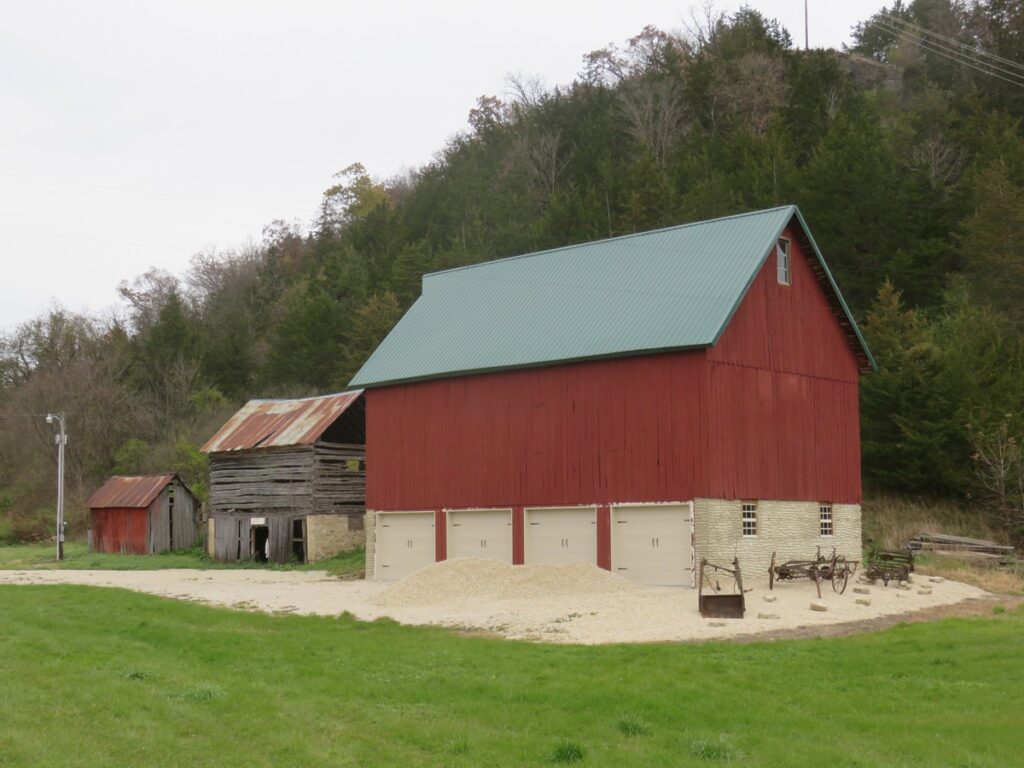


A license to build a barn is not an ordinary business deal, but in 1901 H. A. Bates, a Kossuth County farmer, paid Horace Duncan, a Knightstown, Indiana barn builder, $5 for a license to build his barn. It is a mystery why this round barn wasn’t actually built until 10 years later. When it was photographed in 2013, the owners were Evert and Donna Broesder. They died in 2018 and the barn is not now in use.
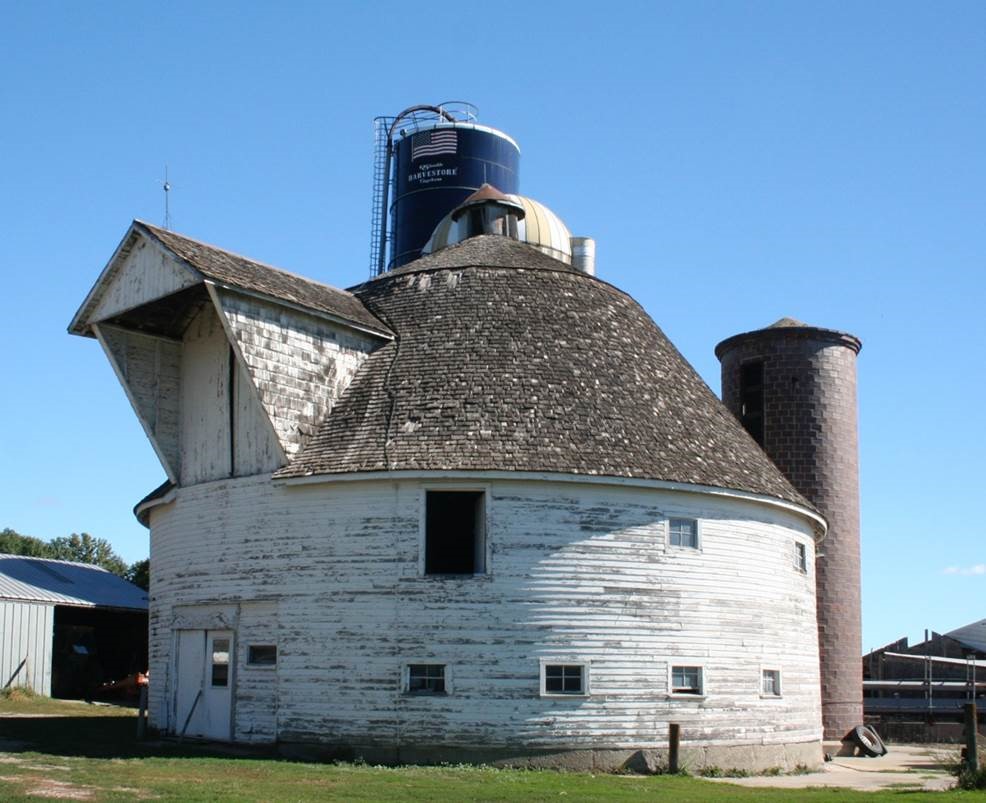
Horace Duncan built a number of round barns in several states. In July 2019 we discovered a magnificent one he built in 1908 on State Route 385 in the Lakeview, Ohio area. The family’s elegant 1875 home is at the end of the long driveway, pictured below.
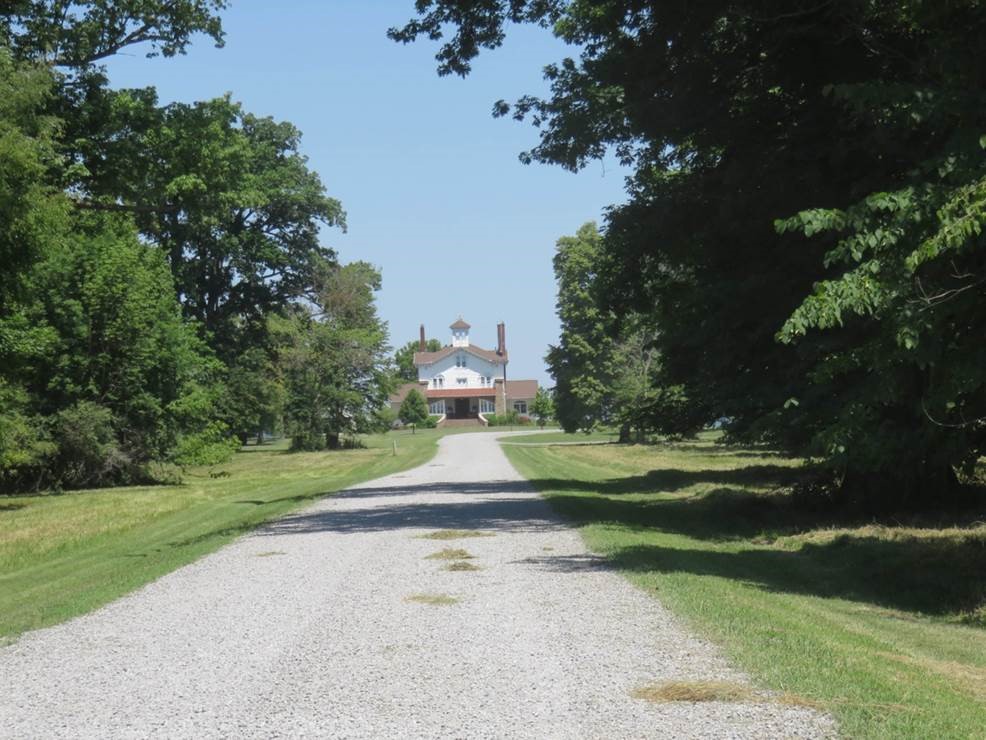
The Maple Avenue farm round barn was built in 1908 for J. H. Manchester and is still owned by the fifth generation of the Manchester family. It is a Shaker design with feed and hay stored in the center and livestock housed around the outside. It has been used for seed storage in recent years. At 102 feet in diameter, it is the largest round barn east of the Mississippi River, and has been on the National Register of Historic Places since 1980.

What do you call these functional things on top of barns? Cupolas or ventilators? Either one will do and they are often used synonymously.
In early days a cupola was the “icing on the cake,” located at the top of the most important building on the farm. They were originally made of wood and were square, round, or multisided, designed with the purpose of allowing heat and moisture to escape.
What about ventilators? The Louden Machinery Company in Fairfield, Iowa wanted to capitalize on the cupola concept. They claimed that wooden cupolas wouldn’t last forever, but their new metal ventilators were superior. They were advertised as being storm proof, bird proof, and meant to last a lifetime.
They called their Louden metal ventilator a cupola. What an idea! Marketing is everything! Often these ventilators included artistic designs stamped in the metal and incorporated a weather vane topped with a horse, cow, or pig. Here are a few examples of cupolas and ventilators. Besides serving a useful function, they add character and interest to barns.

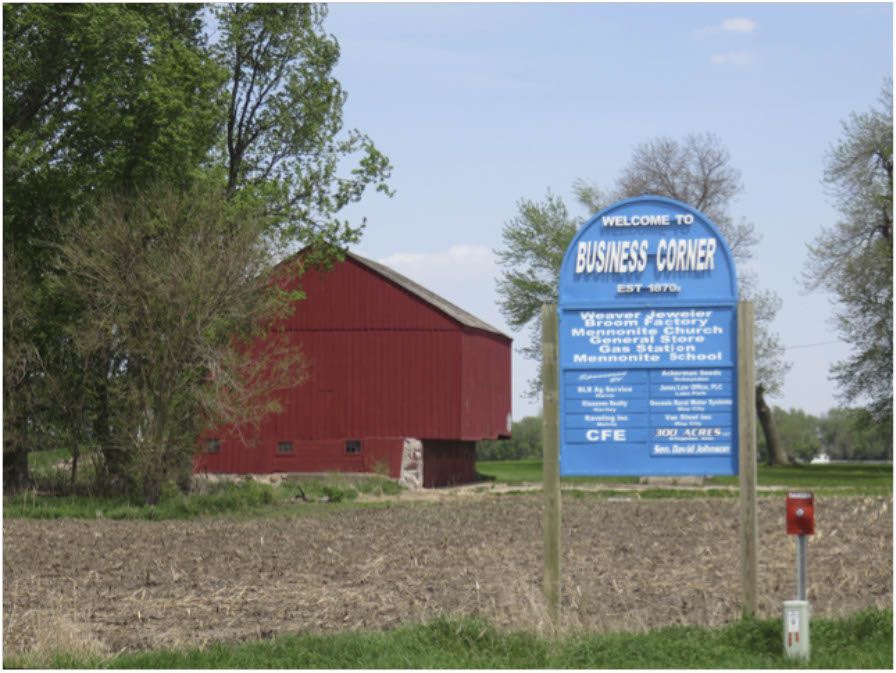
Welcome to Business Corner! This sign, erected in 2017 at the intersection of Osceola county roads M-18 and A-34, lists businesses in this area beginning in the late 1880s (not 1870s as the sign suggests). There was a gas station, but not until the late 1920s since the 1870s was before the existence of cars. There also was no general store or broom factory in early Business Corner days.
In the mid-1880s a number of Mennonite families arrived in Ocheyedan by train from Michigan, Indiana, Pennsylvania, and Ontario, Canada. They moved to this area of the county, bought land, and built barns and homes. The village closest to Business Corner is May City, established in 1889.
Daniel and Fannie Weaver were among the first to arrive, building the historic barn seen in the background in 1889. The business sign says “Weaver Jeweler,” although Daniel was actually an optometrist who also made jewelry, clocks, and watches.
A blacksmith, shoemaker, wagon shop, harness shop, and cigar factory, as well as a church, school, and cemetery existed during the time the Mennonites lived in the area. All the buildings were painted red.
The colony was short-lived, due to disagreements over church affairs and differing customs they had when they arrived. By 1915 all but a few of the families had left the area. Today there are no Mennonites, except those buried in the Mennonite cemetery.
Today this landmark barn, owned and restored by the Lorch family, serves as a reminder of early settlement.

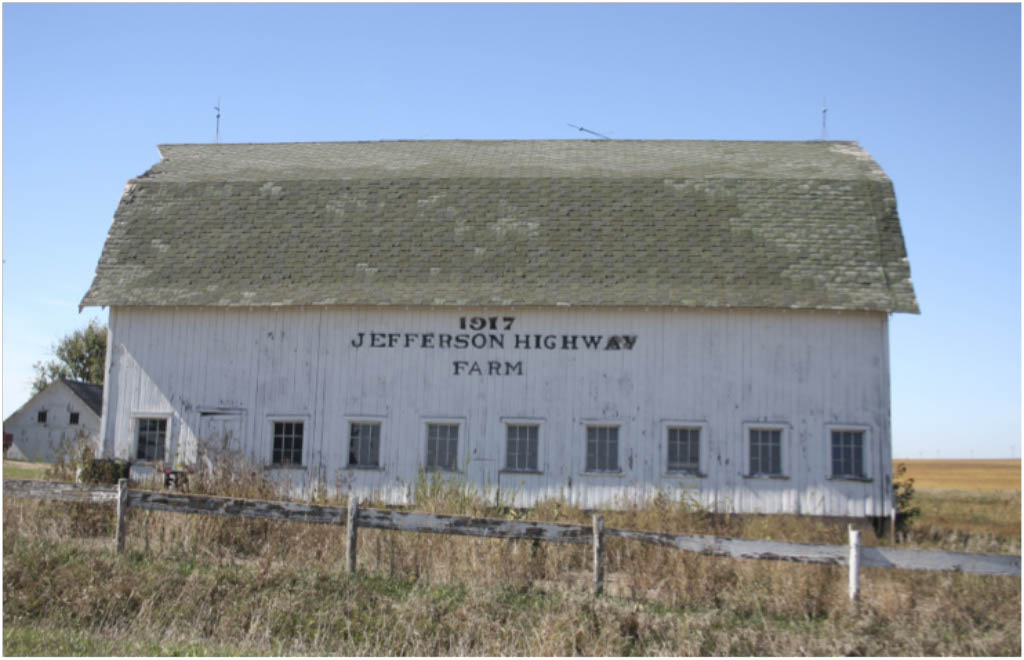
Another barn destroyed by fire. This barn, south of Hubbard, was built in 1917 with “Jefferson Highway Farm” painted on the side. The Jefferson Highway went past the barn, although the route varied when the U.S. highway naming system began in 1926. In Hardin and Story counties it followed what is now Highway 65. It was promoted as the “Pine to Palm” route and was the first north-south transcontinental highway in America, extending from Winnipeg, Canada to New Orleans.
The town of Hubbard was tentatively making plans to move the barn into the town and restore it, but early in the morning of March 13, 2019, it is believed to have been struck by lightning.
Many remembrances of the original Jefferson Highway can be found on paintings and markers in towns all along the route. There are murals on two buildings in Decatur county, one in Leon and one in Lamoni, as both towns were on this highway. Below is the Lamoni mural.
